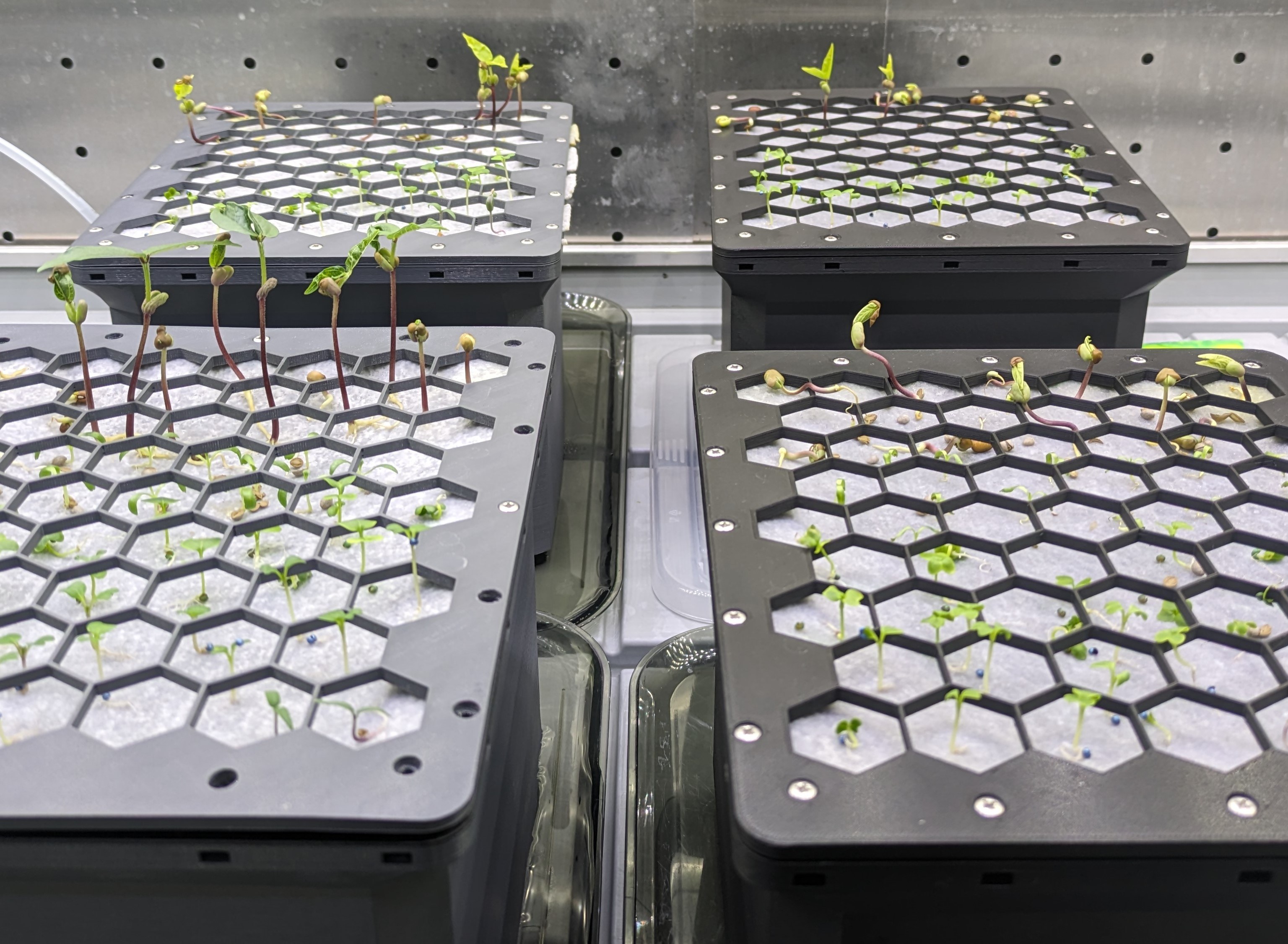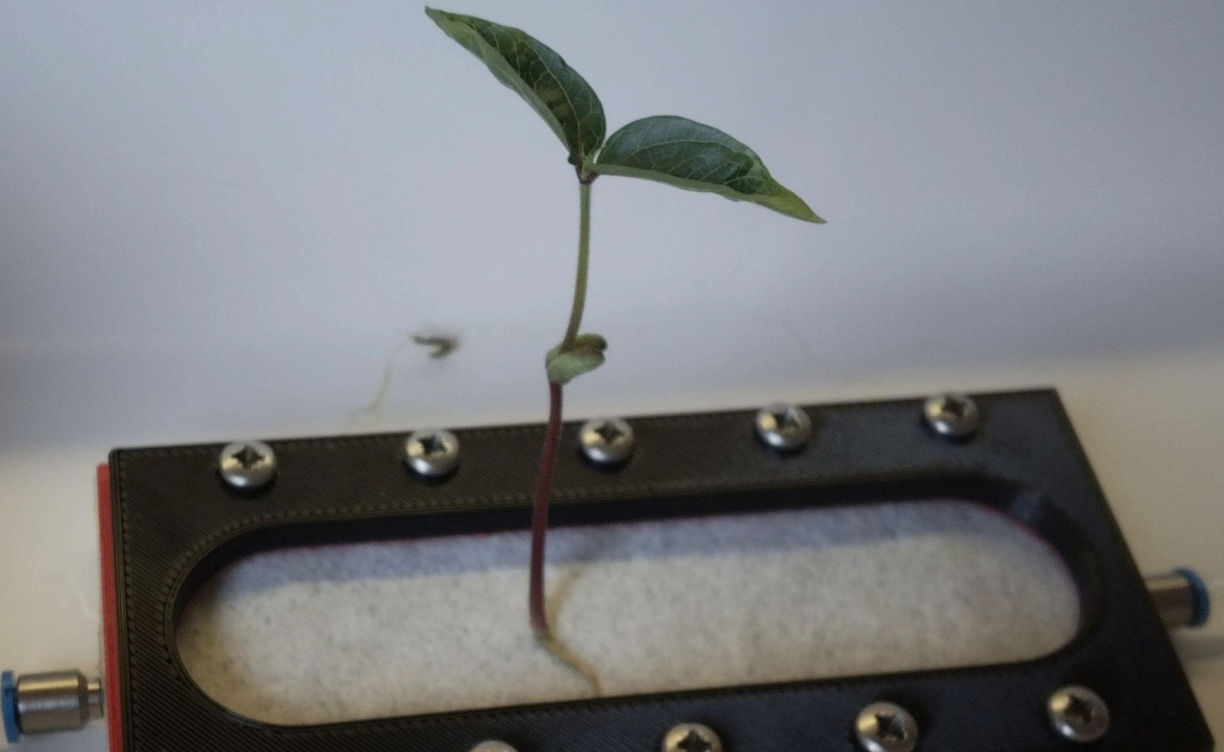Substrateless root module for hydroponic crop cultivation in fractional gravity
-
 Achim GerstenbergProsjektleder
Achim GerstenbergProsjektleder -
 Anja JennerProsjektdeltager
Anja JennerProsjektdeltager -
 Øyvind Mejdell JakobsenProsjektdeltager
Øyvind Mejdell JakobsenProsjektdeltager -
 Sophie Labonnote-WeberProsjektdeltager
Sophie Labonnote-WeberProsjektdeltager
For astronauts on long missions, a healthy and balanced diet is vital to maintaining their physical and mental well-being. Yet, some essential vitamins, like B1 and C, degrade over time, making it difficult to ensure a nutritious diet for more than a year without relying on resupply missions from Earth.
A promising solution lies in growing edible plants directly in space. These plants are cultivated hydroponically using a deep-water culture system, where their roots are suspended in a tank of nutrient-rich water instead of soil. This minimizes launch mass. To further significantly reduce resource consumption, the nutrient-rich water is continuously recycled in a closed-loop system and plant nutrients are derived from organic waste.

But growing plants in space isn’t as simple as it sounds. On Earth, gravity keeps water at the bottom of a tank, but in the microgravity environment of space, water tends to cling to surfaces, including a plant’s leaves, stems, and branches. This can block the gas exchange required for photosynthesis and even suffocate the plant. Current systems for plant cultivation in microgravity use sponge-like substrate to hold water near the roots, relying on capillary action. However, these substrates prevent proper water exchange around the roots, making it hard to monitor and control plant nutrient concentrations. Precise nutrient control is challenging yet essential when using recycled organic waste, as its nutrient composition does not usually match the plant's needs over time.
To address this, CIRiS is developing an innovative technology: a water-tight membrane that allows roots to grow through it while maintaining direct contact with the nutrient solution. This innovative design eliminates the need for sponges, allowing for precise control over nutrient delivery and enabling substrate-free crop cultivation in microgravity.
This project is part of the European Space Agency’s Open Space Innovation program, which funds novel ideas that push beyond the current state of the art. While these projects carry uncertainty and technical challenges, their potential to innovate for space - and for Earth – is immense.
